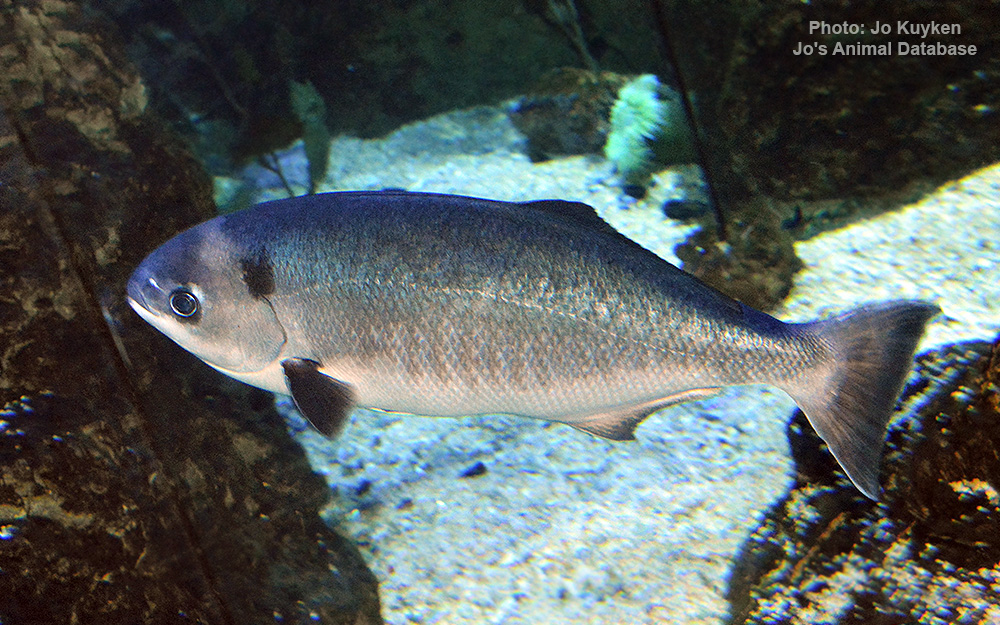Halfmoon
(Medialuna californiensis)

Image source: Jo's Animal Database
Classification
General data
The halfmoon has an elongate, compressed, oval body with a small pointed head. It has a small, horizontal mouth in which the upper jaw is partially hidden by the orbital bone when the mouth has closed. Each jaw has a single row of pointed teeth.
It has a continuous dorsal fin which has 9–11 spines in the anterior portion which fold down into a scaly furrow, the posterior portion has 22–27 soft rays and these are higher than the spines. The anal fin has 3 spines and 17–21 soft rays. The caudal fin is marginally concave.
Most of the head and body is covered in small, thick and rough scales except foe the area forward of the eyes.
The colour is dark bluish grey to grey dorsally, paler ventrally sometimes with faint, narrow, vertical bars along the flanks. It has a dark blotch on the upper corner of the gill cover. The margins of the dorsal, anal and caudal fins are dark and the outer edge of each lobe of the caudal fin is white.
Juvenile fish are blue above and silvery below.
The maximum recorded total length of the halfmoon is 48 centimetres (19 in).
The shape of the caudal fin is said to resemble a crescent moon, leading to the common name.
The Halfmoon is native to the eastern Pacific Ocean along the western coast of North America from Vancouver Island in the north to the Gulf of California, although it is rare north of Point Conception in California.










